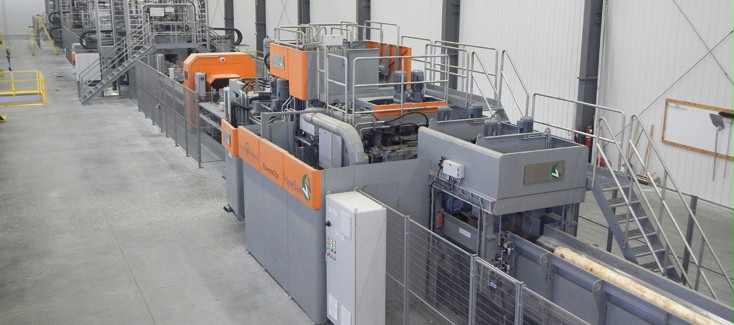Wednesday, 23/10/2024 | 15:26 GMT+7
Increasing energy efficiency in production operations is a prime target for many companies, for a number of different reasons. Power consumption is an important factor in operating costs. Commitments undertaken voluntarily by the companies – and legal mandates – to reduce CO2 emissions can be achieved only by lowering power consumption. In growth regions like Asia, unlimited access to electricity is not always the case. In some instances it is rationed.
Industrialized countries like Germany are seeing a rise in the share of renewable energy. The volume of electricity generated does vary considerably, depending on the wind and the amount of sunlight. Following the trading on the European power exchanges shows the enormous price differences that can occur during the course of a day. Within 24 hours the price for electricity on the EPEX power exchange – serving France, Germany, Austria and Switzerland – may fluctuate by as much as 800 percent.
In recent years many manufacturing companies have markedly increased their energy efficiency. Both when making new investments and when modernizing equipment, they pay close attention to energy productivity. With energy-efficient system design, with components that are highly effective, with performance output matching actual demand, and by recovering braking energies – modern machines consume considerably less energy, at higher productivity.

Even if, at the machinery level, there are still unexploited potentials for greater energy efficiency, the next great advance will be at the factory level – in the opinion of experts such as Professor Gunther Reinhart, president of the FOREnergy research alliance. One example is the exchange of energy, which has already been realized within numerous machines. Intelligent software functions switch motors into the generator mode to decelerate shafts. The electricity thus recovered can be fed to other using units in the same power circuit; it may also be put in storage or returned to the power grid. What has been implemented in the past only within machines now harbors enormous potentials for boosting efficiency by exchanging energy between machines.
The prerequisites for the next level of savings are now being created through an entirely different trend: horizontal and vertical networking of all the equipment and machines to achieve Industry 4.0. In these concepts almost no additional effort is required to measure all the energy flows, to evaluate them, and to boost energy efficiency along the entire value stream. Working with these data, a higher-level control system can recognize patterns that are suitable for optimization. This is the prerequisite for trimming peak loads. One simple example is cascading the start of machines in the morning. In addition, energy efficiency within the plant can be improved by trading energy among the machines.
Automation technology is now ready to do this. With its decentralized intelligence and open interfaces, it dovetails with these concepts. In this way industrial users can soon reach the next step in energy-efficient manufacturing.
Anh Tuan

.jpg?w=367&h=206&mode=crop)






 Promoting the Energy Efficiency Investment Market in the Industrial Sector
Promoting the Energy Efficiency Investment Market in the Industrial Sector
 Scaling Up Energy Efficiency Models in the Textile Industry
Scaling Up Energy Efficiency Models in the Textile Industry
 Indonesia aims to reduce emissions through building industry
Indonesia aims to reduce emissions through building industry
 Energy Savings from Technical Solutions to Human Efforts
Energy Savings from Technical Solutions to Human Efforts
.jpg?w=367&h=206&mode=crop) 2024 Energy Efficiency Awards Launching Ceremony
2024 Energy Efficiency Awards Launching Ceremony
 VSUEE Project Implementation Promotional Measures: Challenges and Opportunities
VSUEE Project Implementation Promotional Measures: Challenges and Opportunities
 Promoting innovative startups in the field of energy efficiency
Promoting innovative startups in the field of energy efficiency